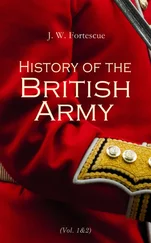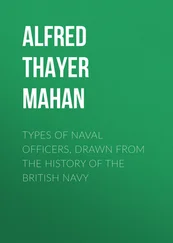Captain was of course an old title, and had been used for the chief of a band in France ever since 1355, having been borrowed possibly from the free companies. The captain's locum tenens or lieutenant had been instituted by the reforms of Charles the Seventh in 1444, and together with him his standard-bearer or ensign,[65] but there were other junior officers who came later even than the colonels to supplement the new military vocabulary. In 1534 we encounter for the first time fouriers , caps d'escouade , and lancepessades . The first of these, which existed for a time in the corrupted form furrier , has passed from the English language.[66] The second is the French form of the Italian capo de squadra , head of the square, a reminiscence of the days when men were formed into square blocks, squads or squadrons, which passed into caporal and so into our English corporal. The third, again a French form of the Italian lanz pesato , signified originally a man-at-arms whose horse had been killed and who was therefore compelled to march with the foot. Being a superior person, he was not included among the common infantry-men but held this distinctive and superior rank, whence in due time was derived the prefix of lance to the titles of sergeant and corporal. Finally, in the year 1550 foot-soldiers in France began to be called by the collective name of fanterie or infanterie . This word, too, was a corruption from the Italian, for Italian commanders used to speak of their troops as their boys, fanti , and collectively as fanteria ; and from them the term passed into all the languages of Europe. Nothing could better commemorate the situation of Italy in the sixteenth century as at once the cockpit of the nations and the school of the new art of war.
But before leaving France there is another aspect of her military institutions to be touched on. After the death of Francis the First, and particularly during the period of the religious wars, the discipline and tone of the French army underwent woeful deterioration. Captains from the first had been proprietors of their companies, which indeed were sometimes sold at auction by the colonel to the highest bidder; and, as they received a bounty in proportion to the numbers that they could show on their rolls, the rascality and corruption were appalling. The enforcement of strict discipline was bound to cause desertion, and every deserter meant a man the less on the captain's roll and a sum the less in the captain's pocket. No effort therefore was made to restrain the misbehaviour of soldiers when off duty; they were allowed to rob and plunder at their own sweet will, and they had the more excuse since they were encouraged thus to indemnify themselves for the pay stolen from them by their officers. This recognised system of pillage was known as picorée ,[67] a word which has passed through the English language in the form of pickeer. Yet another method there was among many of falsifying the muster-rolls, namely on the day of inspection to collect any yokels or men that could be found, thrust a pike into their hands, and present them as soldiers. They were duly passed by the muster-master, and as soon as his back was turned were dismissed, having served their purpose of securing their pay for the illicit gain of the captain till next muster. Such men were called passe-volans , a word which also was received into the military terminology of Europe, and like mortes-payes received at last official recognition. It must not be thought that such abuses were confined to France, but it is significant that she was the country to find names for them.[68] Nor must the reader be unduly impatient over the mention of these details in the military history of foreign nations. The English soldier for the next century and more is going to school, where like all pupils he will learn both good and evil; and it is impossible to follow his progress unless we know something of his schoolfellows as well as of his tutors.
1495.
Atella, 1496.
1503.
1512.
Last of the nations let us glance at Spain, at the close of the fifteenth century just emerging triumphant from eight centuries of warfare against the Moors and girding herself for a great and magnificent career. Her training in war had been against an Oriental foe, swift, active, and cunning, and it is not surprising that when first she entered the field of Italy and met the massive columns of the Swiss at Seminara she should have given way before them. But at the head of the Spanish troops was a man of genius, Gonsalvo of Cordova, who was quick to learn from his enemies. Confining himself for a time to the guerilla warfare which he understood the best, he mingled pikes among the short swords and bucklers which were the distinctive weapons of the Spanish infantry, and within a year had gained his first victory over the Swiss. His next campaign found him with a body of landsknechts in his pay, when he quickly perceived the possibilities that lay not only in the pikes but still more in the fire-arms which they brought with them. Before the year was past he had routed Swiss infantry and French cavalry in two brilliant actions at Cerignola and on the Garigliano, and fairly driven them out of Naples. He then set himself to remodel the Spanish foot by the experience which he had gathered in his later campaigns, and this with full appreciation of the moral and physical peculiarities of his countrymen. Thus though it was in the Spanish tongue that the pike was first named the queen of weapons, yet the value of the sword in the hand of a supple active people was never overlooked, and at Ravenna no less than Cerignola the rush of nimble stabbing Spaniards under the hedge of pikes had proved fatal to the lumbering unwieldy Teuton.
1522.
1525.
Still more remarkable was the rapid development of the power of musketry in Spanish hands. At Bicocca the Marquis Pescayra met the attack of a gigantic Swiss battalion by drawing up a number of small squares or squadrons of Spanish arquebusiers in front of his own battalion of pikes. His instructions were that not a shot should be fired without orders, a fact that points to early excellence in what is now called fire-discipline, but that each front rank should fire a volley by word of command and having done so should file away to the rear to reload, leaving the remaining ranks to do the like in succession. The results of this manœuvre were disastrous to the Swiss; and this ingenious method of maintaining a continuous fire of musketry was the law in Europe for the next century and a half. In fact, if it were necessary to fix an arbitrary date for the first really effective use of small fire-arms in the battlefield the day of Bicocca might well be selected. But we must not fail to note concurrently the drill and discipline which made Pescayra's evolution possible. Three years later, at the famous battle of Pavia, this same skilful soldier attempted a still bolder innovation with his arquebusiers, and with astonishing success. Being threatened with a charge of French heavy cavalry (men-at-arms) he deployed fifteen hundred of his marksmen in skirmishing order before his front, who, taking advantage of every shelter and moving always with great nimbleness and activity, maintained a galling fire as the cavalry advanced, and finally, taking refuge under the pikes of the battalions which were drawn up in their support, smashed the unfortunate French as effectively as the English archers at Creçy. In truth, the effect of this daring experiment on military minds in Europe was hardly less than that of Creçy itself. Henry, Duke of Guise,[69] an excellent soldier, was so much struck by its success that he showed how the principle might be indefinitely extended and find ultimate shape, as many years later it did, in the formation of distinct corps of light-infantry. His own attempt to organise such a body in France was however a failure, and the Spanish arquebusiers long held their own as the first in Europe, a proud position which they had most worthily gained.
Читать дальше












